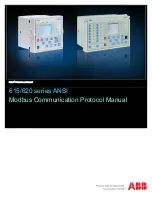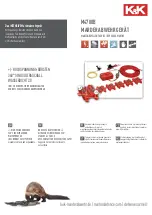
SEC1000 FIRE ALARM CONTROL PANEL
Page
12
of 24
The SEC1000’s network protocol allows the interconnection of 20 SEC1000 main panels by
CAN bus. To build a network, all panels should be registered on the central panel (Host No.1).
Tick the ‘Share’ option if alarm signal of the central panel is required to be transmitted to the
other sub panels. On the local sub panel, register the panels where its alarm signal is going to
be reported. Only the registered panels on a sub panel will receive and display alarm signals
from that panel.
In network, the time of the system is based on the time of the central panel, that is, when the
time of Host 1 is changed, time on other networking panels will be altered accordingly.
Note
: All panels in a network should be set with the same transmission rate. The number of each
panel should be different.
There are 4 transmission rates: 10K, 20K, 50K, 100K. Some factors like the total number of
network panels, the transmission distance of the system and the type of cable used should be
taken into consideration. Commonly, twisted-pair cable is used for a network of 2-5 panels
with the rate of 20K within 1000m.
Tips
: View the sending packets number and the receiving packets number on the bus through the
‘
Check BUS quality
’
menu option under the DISABLE/TEST category to see if they are close to each
other, otherwise it means low ratio of success transmission where better to decrease the transmission
rate or improve the transmission medium. In addition, when a CRT is involved in, it is regarded as a
main panel and takes up a host number.
Caution
: The networking connection should be in series instead of a star or a ring way, otherwise
abnormal communication will present.
Printer setup
This function is not applicable to SEC1000.
Содержание SEC1000
Страница 1: ......
Страница 26: ...SEC1000 FIRE ALARM CONTROL PANEL...












































